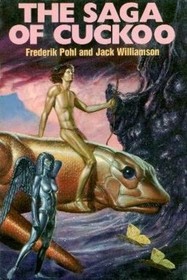Search -
The Saga of Cuckoo
The Saga of Cuckoo
Author:
This book includes two full books: — "Farthest Star" and "Wall Around a Star" — Farthest Star: — CUCKOO WAS COMING...No one knew what it was--but everyone knew it was trouble. Designated Object Lambda when it first appeared on the fringes of the galaxy, 20,000 light-years away, it was traveling at one-sixth the speed of light. T... more »
Author:
This book includes two full books: — "Farthest Star" and "Wall Around a Star" — Farthest Star: — CUCKOO WAS COMING...No one knew what it was--but everyone knew it was trouble. Designated Object Lambda when it first appeared on the fringes of the galaxy, 20,000 light-years away, it was traveling at one-sixth the speed of light. T... more »
ISBN: 398440
Publication Date: 1975
Pages: 434
Rating: 1
Publication Date: 1975
Pages: 434
Rating: 1
1.5 stars, based on 1 rating
Publisher: Nelson Doubleday
Book Type: Hardcover
Other Versions: Paperback
Members Wishing: 0
Reviews: Write a Review
Book Type: Hardcover
Other Versions: Paperback
Members Wishing: 0
Reviews: Write a Review
Genres:




